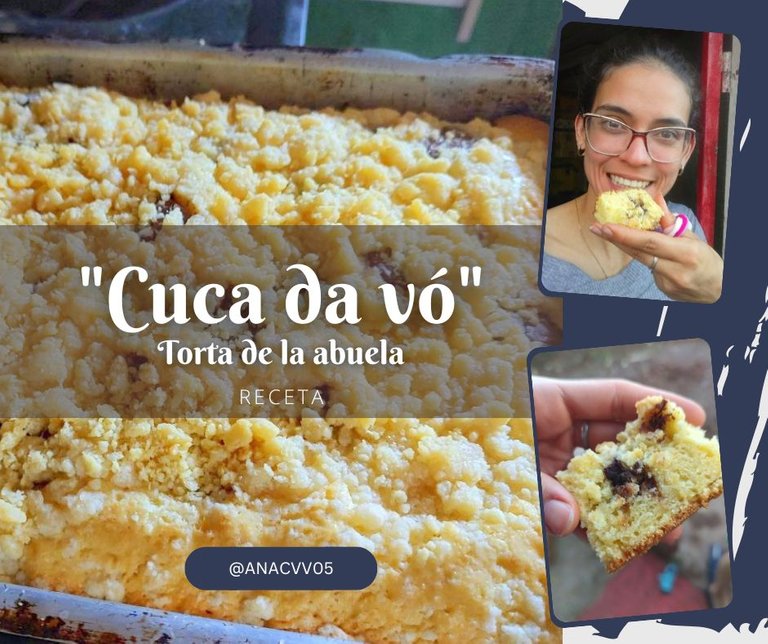
Hola Chicos // Hi Guys
Mientras escribo este post estoy de viaje con mi hija y unos amigos. Vinimos a visitar Rio grande do Sul, otro estado de Brasil.
De nuevo pasó mucho tiempo para escribir de vuelta en esta comunidad y es que como les he comentado antes no me gusta mucho cocinar, sin embargo me gusta la repostería. Esto no quiere decir que no cocine, sino que es algo que no hago con mucho gusto. Y no hacer con gusto no implica que me quede mal la comida porque adoro comer y entonces tengo que cocinar bien para darme mis gustos jejejeje.
Hoy les traje una receta típica del Sur de Brasil y aquí la llaman Cuca, la textura y el sabor se parece mucho a una torta. Bueno la que llaman casera o cuca da vó (cuca de la abuela) se parece a una torta, mientras que la de panadería se parece más a un pan dulce. Lo que las diferencia de un pan y una torta es que arriba tienen un preparado de margarina, harina y azúcar que se deja grumoso y cuando se asa queda crocante. Les compartiré la receta para que puedan replicarla en casa.
As I am writing this post I am on a trip with my daughter and some friends. We came to visit Rio Grande do Sul, another state in Brazil.
Again it took me a long time to write back in this community and as I told you before I don't like to cook, however I like baking. This does not mean that I do not cook, but it is something that I do not do with pleasure. And not doing it with pleasure doesn't mean that the food is bad because I love to eat and then I have to cook well to give me my tastes hehehehehe.
Today I brought you a typical recipe from the South of Brazil and here they call it Cuca, the texture and taste is very similar to a cake. Well the one they call homemade or cuca da vó (grandmother's cuca) looks like a cake, while the bakery one looks more like a sweet bread. What differentiates them from a bread and a cake is that they have a margarine, flour and sugar mixture on top that is lumpy and when grilled it becomes crunchy. I will share the recipe with you so you can replicate it at home.
Ingredientes:
- 2 huevos
- Una taza de azúcar
- Media taza de aceite
- Dos tazas de harina de trigo
- Dos cucharadas de maizena
- Una taza de leche tibia
- Una cucharada de polvo royal
- Pizca de sal
Ingredients:
- 2 eggs
- One cup of sugar
- Half cup of oil
- Two cups of wheat flour
- Two tablespoons of cornstarch
- One cup of warm milk
- One tablespoon of royal powder
- Pinch of salt
PROCEDIMIENTO // PROCESS
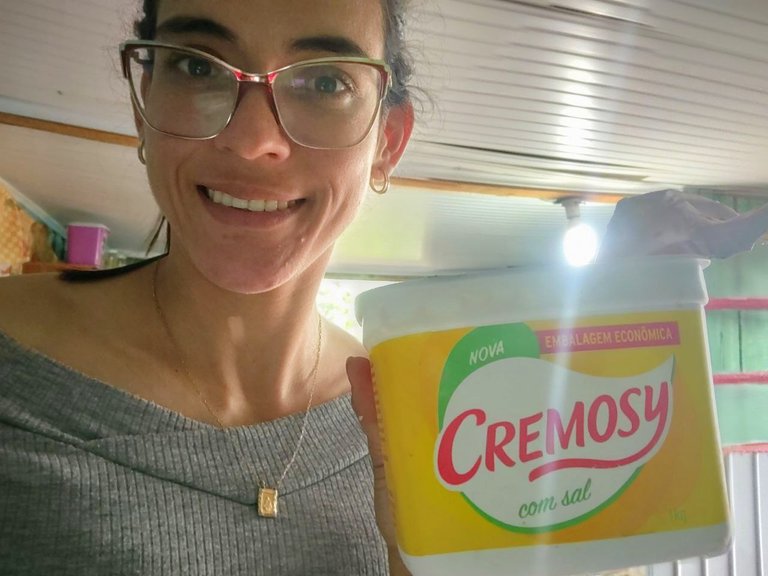
Lo primero que haremos es mezclar los huevos y el azúcar en una batidora hasta que la mezcla se torne blanca. Esto podemos hacerlo con un tenedor también, pero nos tardaremos más.
The first thing we will do is mix the eggs and sugar in a mixer until the mixture turns white. This can also be done with a fork, but it will take longer.

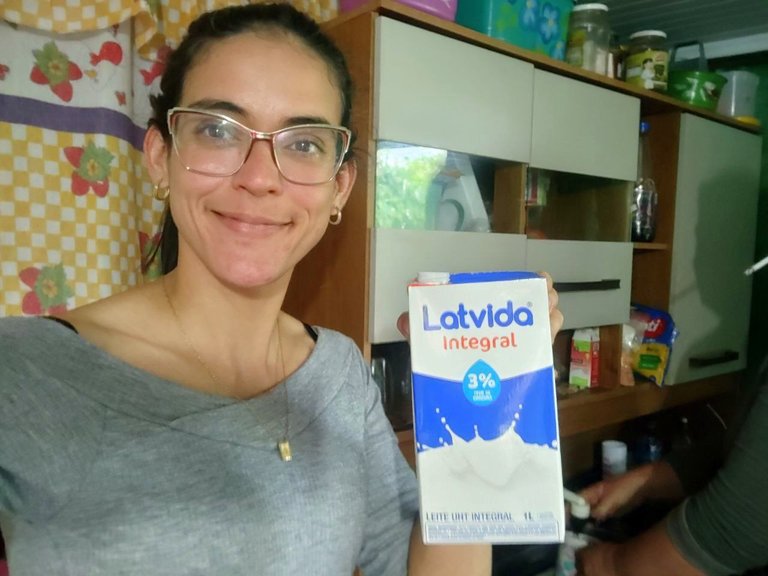
Después agregaremos la media taza de aceite y la leche tibia. Integraremos a la masa para después añadir la harina, la maizena y la pizca de sal. Mezclaremos bien y por último colocaremos una cucharada de polvo royal.
Then add the half cup of oil and the warm milk. Add the flour, the cornstarch and the pinch of salt to the dough. Mix well and finally add a spoonful of royal powder.
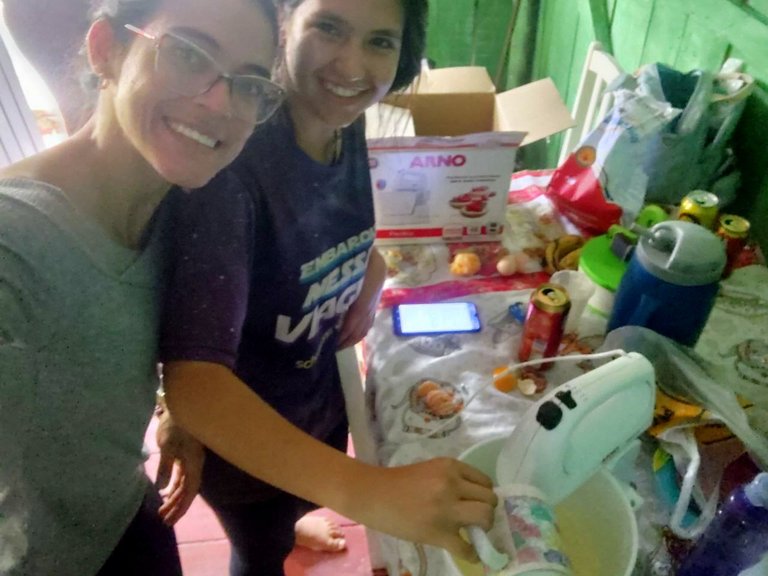
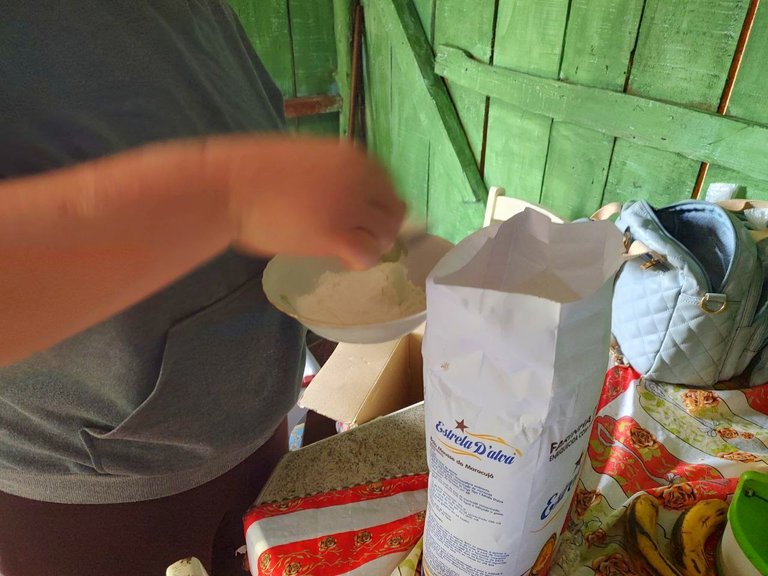
Ahí ya tendremos nuestra mezcla lista. Luego tenemos que realizar la mezcla para la parte crocante de arriba que les mencioné anteriormente. Para esto mezclaremos tres cucharadas de margarina, ocho cucharadas de harina y ocho cucharadas de azúcar. Esta mezcla la debemos dejar como si fuese una arena mojada, que sean más pedazos de mezcla que una masa.
There we will have our mixture ready. Then we have to make the mixture for the crunchy part on top that I mentioned before. For this we will mix three tablespoons of margarine, eight tablespoons of flour and eight tablespoons of sugar. This mixture should be left as if it were a wet sand, which are more pieces of mixture than a dough.
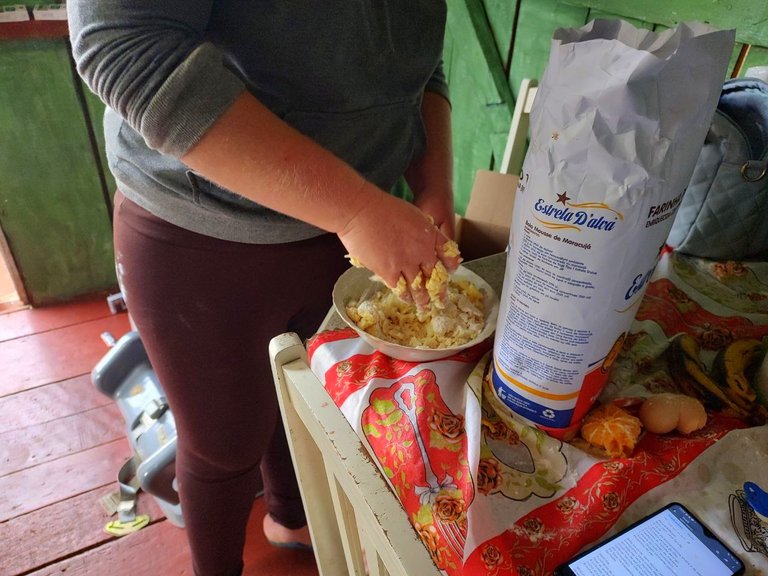
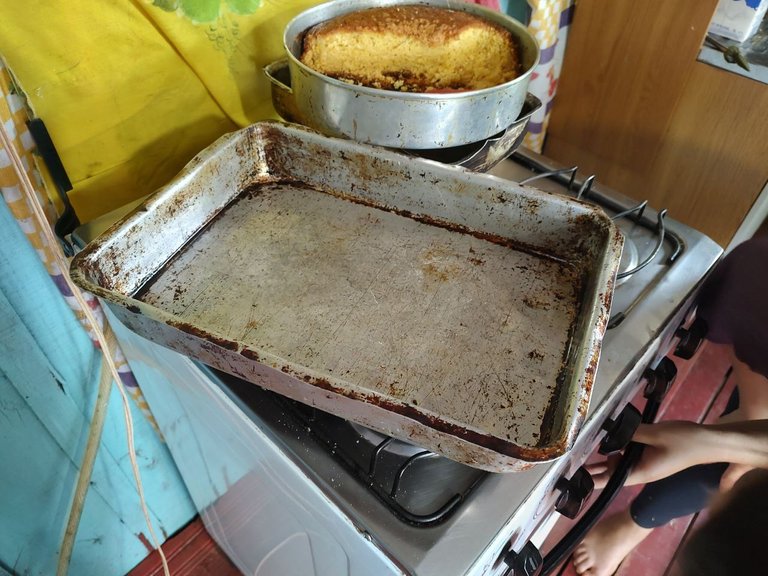
¿Cómo la armaremos?
Bueno después de haber enmargarinado y enharinado un molde colocaremos nuestra mezcla ahí y por arriba le pondremos nuestra "arenita mojada" de harina y azúcar. En esta oportunidad nosotros también le colocamos antes de la "arenita", chocolate. En vez de chocolate se le puede colocar alguna jalea de tu gusto, le quedan muy bien.
How do we assemble it?
Well, after having lined and floured a mold, we will place our mixture there and on top we will put our "wet sand" of flour and sugar. This time we also put chocolate before the "arenita". Instead of chocolate you can put some jelly of your choice, it looks very good.
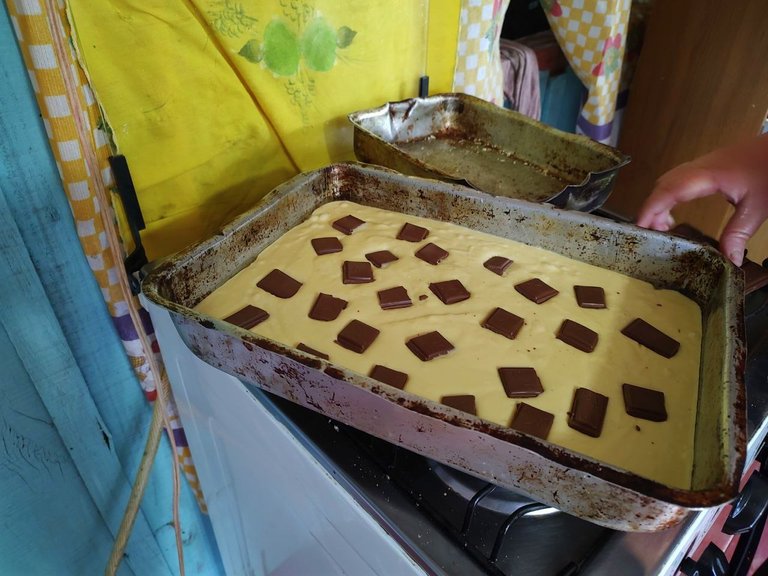
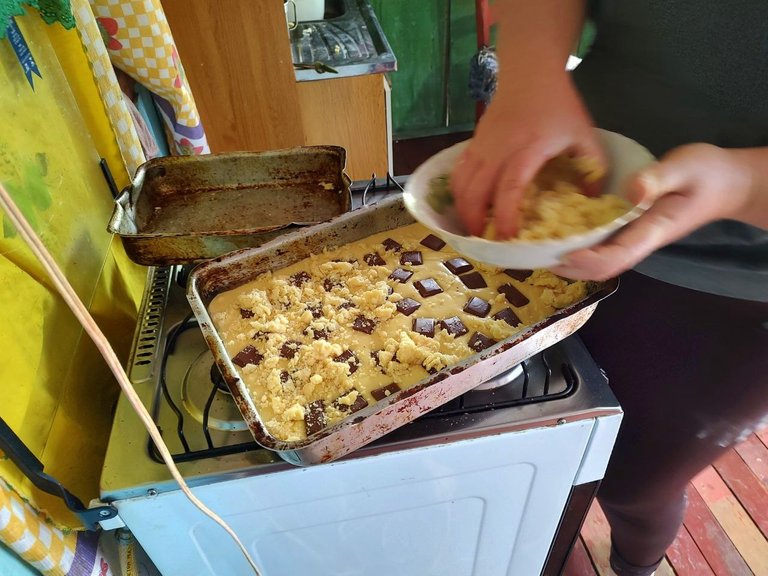
En esta receta yo solo estuve de ayudante de mis amigas y por supuesto aprendí a hacerla también. Este tipo de Cuca casero me gusta más que los de panadería. Ahora de vez en cuando haré una para mi casa, que por cierto a mi hija le gusta bastante este postre.

In this recipe I was just helping my friends and of course I learned to make it too. I like this type of homemade Cuca better than the bakery ones. Now from time to time I will make one for my house, by the way my daughter likes this dessert very much.
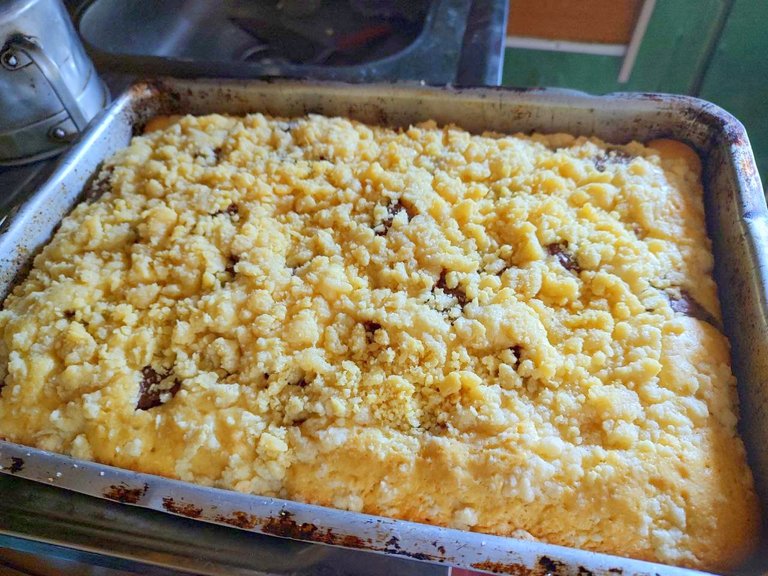
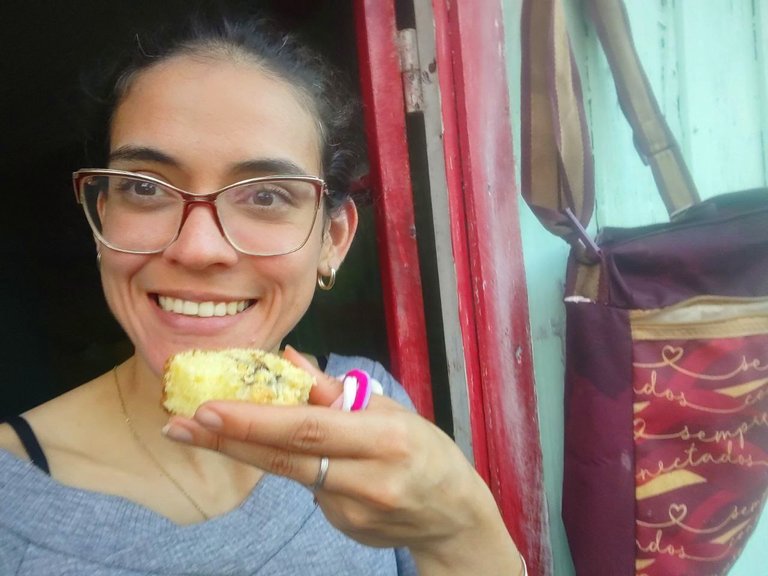
Como dato curioso les digo que aquí en el Sur de Brasil comen cuca como desayuno, cena y aunque no lo crean acompañan la parrilla con este dulce. Este detalle me sorprendió porque es una costumbre que no se tiene en mi país. Con este post les quise compartir mi primera receta brasilera y un poquito de la cultura de aquí. ¡Hasta la próxima oportunidad!
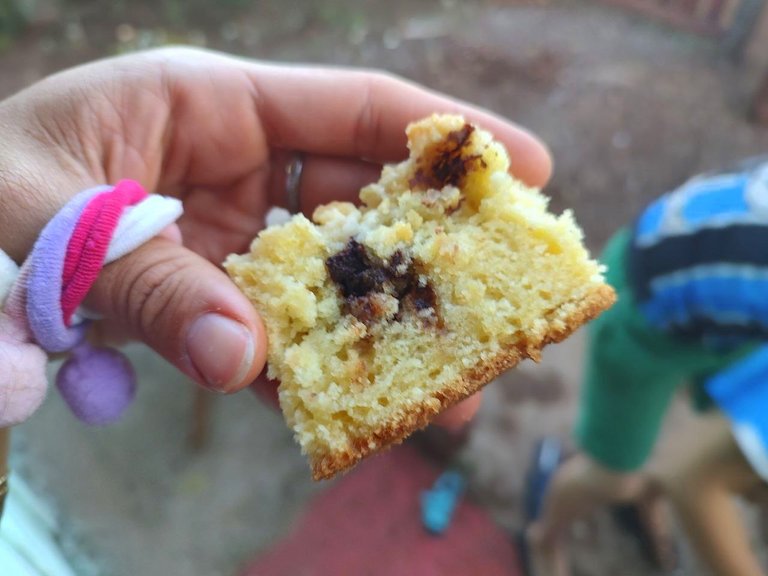
As a curious fact I tell you that here in the South of Brazil they eat cuca for breakfast, dinner and believe it or not they accompany the grill with this sweet. This detail surprised me because it is a custom that they don't have in my country. With this post I wanted to share with you my first Brazilian recipe and a little bit of the culture here, see you next time!



